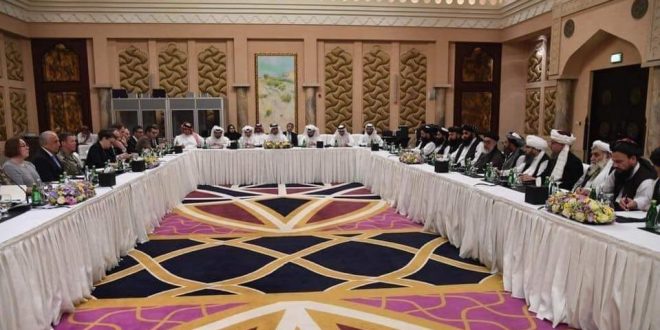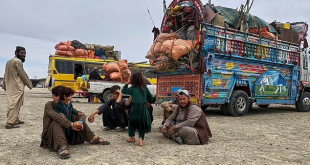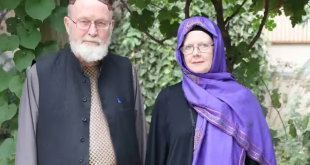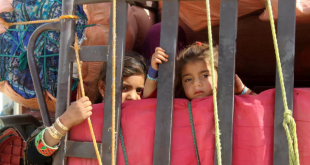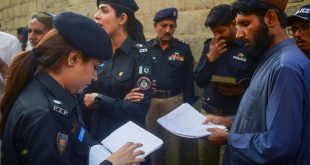Whatever type of ceasefire is negotiated in Doha, it would have two basic ingredients: (i) moratorium on all types of attacks by all parties, here the Government and the Taliban cessation of hostilities, and (ii) initiation of process leading to political settlement. Both ingredients are not mutually exclusive and they have impact on each other. Impasse or failure to find agreeable settlement may trigger termination of moratorium and resumption of hostility for any reason may disrupt the political process.
Upendra Baghel, a specialist on Afghanistan and regional security, is of the opinion that ‘the present conflict with the Taliban is 18 years old, started when their regime was toppled in the last month of the year 2001. After that, all Taliban were treated as ‘terrorists’ with no serious efforts for reconciliation with them. The political set up in Afghanistan was void of the Taliban representative. Thousands of them were arrested and the remaining ones got dissipated in Afghan society or across the border in Pakistan. They remerged after few years and now they are capable of engaging with Afghan armed forces through insurgent attacks. Based on media reports, they have influence in almost half of the Afghan territory. They have sustainability for continuing insurgency: finance, logistics and casualties. One estimate shows, the Taliban killed almost 45,000 Afghan security personnel in the period of four and half years, from mid of 2014 to beginning of 2019. Taliban militants might have been killed more.
The Taliban provided an umbrella group and operating space for about 20 terrorist organizations and these, except ISIL, are aligned with Al-Qaida and Taliban objectives, mainly, the campaign of the Islamic Emirate of Afghanistan and continued resistance to the United States. Al-Qaida remains closely allied with and embedded within the Taliban. There are even foreign terrorist fighters in the country, numbering around 10,000 to 15,000 with all terrorist groups (including ISIL). The Taliban’s influence over these could be gauged from the first ever three days ceasefire in June 2018, which was successful except two incidents attributed to ISIL. ISIL militants are estimated to be between 2,500 and 4,000, mostly in eastern provinces. In northern provinces, after their elimination in Jowzjan province either killed or surrendered to the government forces or to the Taliban, their presence has been reduced to few hundreds sympathizers. They have established a network of cells in various Afghan cities, including Kabul and maintained close contacts with ISIL’s core in Syria and Iraq. In 2018, they carried out 38 terrorist attacks and many of them were high profile. Even the recent attack during the holy Nowruz festival in March 2019 targeting Shia communities in Kabul was attributed to ISIL
Upendra said that ‘all previous attempts to reconcile with the Taliban failed as they were half hearted and lacked clear vision and agreement between the Afghan government and its western partners. Present efforts are the most hopeful and broad-based. These efforts have progressed substantially. Some of the previous efforts deepened mistrust. Some of the Taliban leaders landed in custody when they appeared to surrender. Few negotiators who are negotiating now from Taliban side were in Guantanamo detention and many of them were detained and sent there after they had surrendered or had started cooperating with Afghan government and/or US establishments. Five such released leaders are negotiating with US team. Recently released information, although it was not confirmed by any party, concerning to a proposal mooted by UAE to USA in January 2019 to set up an assassination programs targeting top Taliban leaders, would further create more mistrust. The UAE has also hosted one round of the currently ongoing negotiations between the US and the Taliban, in December 2018.’
There is mistrust between the Government and the Taliban and it so deep that the Taliban do not recognize the legitimacy of the Government and consistently refusing to negotiate with the Government. United Nations and the Afghan Government recognize them as extremist groups as Al-Qaida and others. Extremist group, the Taliban does not have any space in the political landscape of the country. The Taliban consider themselves as the legitimate representatives of the non-existing entity the Islamic Emirate of Afghanistan. As the representatives of the Emirate, they have the state structure including the nominated territorial functionaries. First, the Taliban should be persuaded to accept the Afghan Government as representative of the Afghan people and Afghan state and then the government starts promoting mutual coexistence. In pursuit of their objectives, the Taliban have been repeatedly attacking the Afghan government installations, especially the military and police establishments.
Upendra said that ‘for ceasefire to be effective, both need to recognize each other as stakeholder in Afghanistan and till now there is no mutual convergence on this aspect.’ He said that ‘at present, the Doha talks which are taking place between US and the Taliban are not very clear whether US is discussing with the Taliban as insurgents, or political faction or representative of self declared Emirate.’
Ceasefire, if any, would be in this context of enabling operating space, trust and identity politics. For a sustainable ceasefire, both parties – the government and the Taliban – need to develop a narrative in which both parties feel win-win situation. Off late, parties agree that there is no military solution but still a common narrative is not developed. This can only develop, if the Taliban and the government reach to a common understanding for their peaceful coexistence, which cannot be unless there are strong political will and convergences, which are missing.
Unless there are broad-based discussions, US would like to push forward temporary ceasefire. Temporary ceasefires bring temporary relief from the day-to-day miseries for the people and parties in conflict giving a space for extended discussions for political settlement. But in practice, they are more often manipulated as a tool for continued conflict, or broken because they are incompatible with the interests of the warring parties. Last year three days ceasefire, 15-17 June 2018 was utilized by the Taliban for sensing the mood of the people and gaining tactical political advantage, when they appeared in government areas with their flags and even weapons and intermingled with people joyously. They did not extend their ceasefire and retreated to resume military hostility.
Shedding light on nature of ceasefires, Upendra elaborated that ‘in many conflicts, temporary ceasefires are also opportunities to the parties to regroup, reorganize, reenergize and then launch assault. Conflicts end in negotiated settlements when the parties to conflict have reached to ‘conflict fatigue’ or don’t get resources to continue military hostility or the costs of continuing to fight outweigh the prospects for winning. Unfortunately, the people do not have much say in decision making unless they develop single voice, which does not happen.’
There is high probability for a temporary ceasefire rather a comprehensive one. All ceasefires are fragile, but temporary ones are more fragile as there is no trust for reaching convergences and one does not know intentions and machinations of the adversary.
This problem can be mitigated if there are real costs attached to ceasefire violations and restrictions on machinations through third party neutral, independent and impartial verification, monitoring and investigation mechanisms. These could be bilaterally agreeable mechanisms but ceasefires are more likely to stick if neutral personnel and experts are deployed. UN and also regional bodies have been deploying peacekeeping and peace support missions for such roles, but it is not guaranteed that peace would follow ceasefire. Empirically, peacekeeping reduces the risk that a ceasefire will fail by 75-85 percent. The two worst ceasefire failures can be attributed in part to peacekeeping missions – Angola in 1993 and 1998 and Rwanda in 1994 and the recent failures in part in South Sudan. In spite of the operational drawbacks and difficulties of peacekeeping missions, they are surprisingly effective, as they are the impartial observers on ground making it more costly to violate the terms of a ceasefire by providing information to the international community as well as to the local people. Their presence makes returning to a full fledge war more costly and maintaining a ceasefire more likely. UN Security Council mandated peace support operations for such tasks in Kashmir set up in January – April 1948, neither could prevent India-Pakistan wars, and not could resolve Kashmir crisis.
Expressing reservations, Upendra cautioned that ‘complexity of Afghan conflict, with regional and international dimensions and political-religion-ethnic convulsions makes the implementation of ceasefire more intrigue, so that trust is not vitiated and same time parties do not engage in belittling, maneuvering and gaining military and tactical advantages. Complex conflict needs whole of inclusive approach, so that all remain focused to explore political settlement and do not engage in non-Afghan rivalries. One way is to engage them through regional and international bodies such as Organization of Islamic Conference (OIC), SAARC, Islamic Military Counter Terrorism Coalition (IMCTC) and United Nations in ceasefire implementation with quick monitoring, verification and investigation mechanism and enhancing material and political cost of violations.’
The writer is Mohammad Gul Sahibbzada, who is Chief Executive Officer of Kainaat Group of Companies.
 Afghanistan Times
Afghanistan Times
